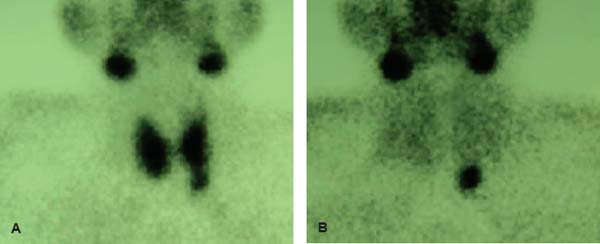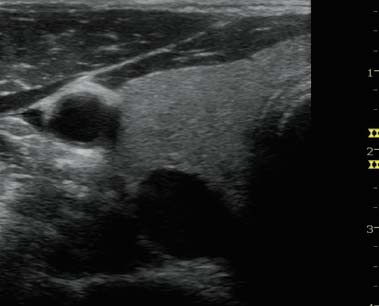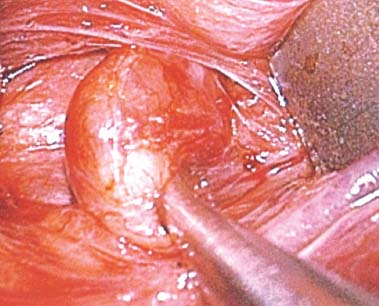2 Core Messages • Accurate preoperative diagnosis is essential for appropriate management of benign parathyroid disorders. • Technological advances have improved diagnostic and management capabilities. • Directed surgery, with minimally invasive techniques, can be used in most cases of primary hyperparathyroidism. Advances in clinical laboratory science, radiographic techniques, and medical technology have changed management of parathyroid diseases dramatically over the past two decades. Patients with parathyroid dysfunction are being diagnosed earlier and with greater precision. At the same time, technical innovations have allowed for the development of directed, minimally invasive parathyroidectomy (MIP) techniques. These advances allow most patients with primary hyperparathyroidism (HPT), the most common benign parathyroid disorder, to be identified when still asymptomatic and managed with minimally invasive procedures. The parathyroid glands are an essential component of the calcium homeostasis system. The production and release of parathyroid hormone (PTH), by the parathyroid chief cells, is directly regulated by serum calcium levels. In response to relative hypocalcemia, PTH is excreted. PTH influences the kidneys to increase calcium reabsorption, promotes resorption and calcium release by the bones, and enhances the absorption of calcium in the intestines by increasing renal activation of vitamin D. Knowledge of the embryologic development and resulting anatomic positioning of the parathyroid glands is essential in managing patients with parathyroid disease. The inferior parathyroid glands and the thymus gland originate from the third branchial pouches and arches, respectively. By descending in concert with the thymus gland, these parathyroid glands move caudally in the neck to a position inferior to the pair of glands derived from the fourth pharyngeal pouches. Thus, the superior parathyroid glands are fourth pouch derivatives, while the inferior glands are from the third pouches. Several embryologic factors can make localization of the parathyroid glands challenging. The superior pair of glands typically remains intimately associated with the posterolateral aspect of the mid-to-superior segment of the thyroid gland.1 The inferior parathyroid glands most often are located near the inferior poles of the thyroid. However, the lengthy migration of the parathyroid glands during embryologic development causes a high risk of aberrantly located glands. Ectopic glands, present in 15 to 20% of the patients, can be located at any position along their developmental course of descent. Glands have been identified from the angle of the mandible to the level of the aortic arch. Ectopic positioning of the superior glands is less common as they have only a limited migratory course. In contrast, the inferior glands, which travel a prolonged distance and are embryologically colocated with the thymus, are more likely to be ectopic. Because of their embryologic codevelopment, intrathyroidal and intrathymic positioning should always be considered when confronted with ectopic parathyroid glands. A second embryologic confounder of parathyroid localization is the significant incidence of subnumerary or supernumerary glands. Approximately 2 to 5% of the patients have five or more glands. A similar percentage of patients have been reported to have fewer than four glands. Typically, the inferior thyroid artery supplies both the superior and inferior parathyroid glands. Alternatively, an anastomotic branch between the inferior and superior thyroid arteries may supply the superior glands. In a coronal plane, the superior glands generally are more posterior than the inferior glands. Consequently, the superior glands tend to be deep to the recurrent laryngeal nerve (RLN), while the inferior glands are usually superficial to the nerve. Before the early 1970s, physicians did not routinely screen patients for elevated calcium levels. Calcium levels are now routinely assessed, leading to early identification of patients with hypercalcemia. PTH assays were first introduced in the 1960s, but it was not until the 1990s when they achieved a high degree of accuracy and reproducibility. For the first time, these assays allowed a definitive diagnosis of primary HPT to be made. More importantly, patients with primary HPT could be diagnosed rapidly and early in their disease course. Modifications of these immunoradiometric PTH assays produced the first “rapid” PTH tests, which could be used intraoperatively to assess the physiologic success of parathyroidectomy. The immunochemiluminometric, rapid assays that are now widely used by surgeons provide results within 8 to 10 minutes. While different protocols for the use of intraoperative PTH levels have been described, they all rely on the short half-life of PTH to quickly assess the impact of gland excision.2,3 Before the development of advanced radiologic localizing techniques, patients with primary HPT required bilateral neck exploration. Effective modalities that can distinguish enlarged, hyperfunctioning glands are now available. By singling out hyperfunctional glands, more focused procedures can be used in place of four-gland exploration. Radionuclide imaging of the parathyroids was introduced in the late 1970s. Until the early 1990s, radionuclide imaging used two imaging agents that had different uptake characteristics by the thyroid and parathyroid glands. Subtracting the uptake of one agent from the other provided imaging of the hyperfunctional parathyroid tissue. In 1992, Taillefer et al described the use of technetium-99m sestamibi (99mTc-sestamibi) as a single agent in a dual-phase technique.4 Both thyroid and parathyroid tissue take up 99mTc-sestamibi. However, hyperfunctional parathyroid tissue retains 99mTcsestamibi for longer than normal thyroid or parathyroid glands. Two images are taken: the first 10 to 15 minutes after injection of the 99mTc-sestamibi and the second 1.5 to 3 hours after the first. Taking advantage of the differential washout rates, the first image is subtracted from the second. This highlights the prolonged uptake by the hyperfunctional parathyroid tissue (Fig. 2.1). Dual-phase 99mTc-sestamibi is highly specific and sensitive for the identification of single-gland adenomas (90% or better). Cases of double adenomas and ectopically located glands are also effectively assessed by 99mTc-sestamibi imaging. Four-gland hyperplasia is less accurately identified by using this imaging technique. By combining 99mTc-sestamibi imaging with single-photon emission computed tomography, greater three-dimensional localization can be achieved.5,6 High-resolution ultrasonography (US) aids in localizing parathyroid adenomas in primary HPT. When used by an experienced operator, US has a high sensitivity and specificity for diagnosis of adenomas (Fig. 2.2). It can be particularly useful in patients with concurrent thyroid nodules or possible intrathyroidal parathyroid adenomas. The anatomic details provided by US complement the physiologic findings seen on radionuclide imaging. These radiologic techniques have fostered the development of directed parathyroidectomy approaches. Performing safe and effective, minimally invasive, directed parathyroidectomies has also been promoted by several new surgical tools. Performing minimally invasive video-assisted parathyroidectomy (MIVAP) relies on the use of high-resolution endoscopes, which provide detailed and magnified images of the operative bed (Fig. 2.3). With this clarity, anatomic structures are readily identifiable. Skin adhesives, which alleviate the need for suture placement, are well suited for MIP incisions. Their use can shorten operative time, eliminate the need for suture removal, and provide excellent cosmetic outcomes. The overwhelming majority of parathyroid disorders manifest themselves as HPT. While cases of hypoparathyroidism do occur, they are rare and, in most instances, are due to iatrogenic causes, such as thyroidectomy. HPT is classified as primary, secondary, or tertiary based on the underlying etiology. Primary HPT, in which production of PTH by the parathyroid glands continues despite normal or elevated calcium levels, is the most common cause of hypercalcemia in the general population. This disease is managed surgically in most patients. In cases of secondary HPT, PTH production is driven by systemic hypocalcemia. In the majority of cases, secondary HPT results from hypocalcemia caused by chronic renal failure (Fig. 2.4). Correction of the underlying hypocalcemia will resolve the reactive HPT. Tertiary HPT develops when the parathyroid glands remain autonomously hyperactive even after correction of longstanding hypocalcemia. Patients with long-standing vitamin D deficiency will sometimes develop tertiary HPT after their deficiency is corrected. Surgical management, most often in the form of total or subtotal parathyroidectomy, is frequently used. Figure 2.1 Images showing a “light-bulb” sestamibi scan, with an intense focus on tracer uptake, in a patient with a parathyroid adenoma. Figure 2.2 A transverse image of an ultrasonography of a parathyroid adenoma extending deep into the thyroid gland. This chapter focuses on the diagnosis and management of primary HPT, given its predominant frequency and surgical nature. The prevalence of primary HPT in the general population is estimated to be approximately 0.1 to 1%. Women, particularly older than 60 years, are between two and three times more likely to be affected than men. Between 80 and 85% of the cases of primary HPT result from the development of a single adenoma. However, double adenomas, which can cause significant diagnostic and management challenges, are present in 2 to 3% of the patients. Multigland hyperplasia, from chief cell hyperplasia, is the cause of 12 to 15% of the cases of primary HPT. Solid sheets of relatively uniform, polygonal chief cells are present in most adenomas. In hyperplasia, all four glands are affected. Differentiating adenomas from hyperplastic glands can be aided by the presence of any normal parathyroid tissue. While adenomas often have a thin rim of normal parathyroid tissue at their periphery, hyperplastic glands contain no normal tissue.
Benign Parathyroid Disorders
Embryology and Anatomy
Advances in Diagnosis and Management
Benign Parathyroid Disorders
Primary Hyperparathyroidism
< div class='tao-gold-member'>
Benign Parathyroid Disorders
Only gold members can continue reading. Log In or Register to continue

Full access? Get Clinical Tree





